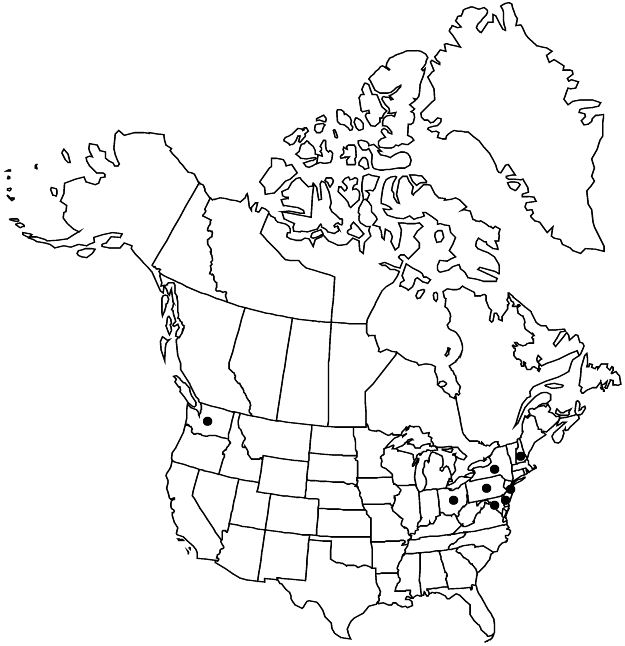Photinia villosa
in A. P. de Candolle and A. L. P. P. de Candolle, Prodr. 2: 631. 1825.
Plants 20–50 dm. Leaves deciduous; petiole 2–6 mm, villous; blade obovate, oblong-obovate, or elliptic, 3–8 × 2–4 cm, herbaceous, base cuneate, margins densely sharply serrate distally, lateral veins 5–7 pairs, apex caudate, surfaces initially white-villous, at maturity abaxial surfaces villous only along veins, adaxial glabrescent or glabrate. Inflorescences 3–6 cm diam. Pedicels with warty lenticels. Flowers 7–12 mm diam.; petals suborbiculate, 4–5 mm, adaxially pilose near base.
Phenology: Flowering late Mar–Apr.
Habitat: Fencerows, thickets, disturbed sites
Elevation: 20–200 m
Distribution

Introduced; Del., D.C., N.H., N.J., N.Y., Ohio, Pa., Wash., Asia (China, Japan, Korea).
Discussion
About five varieties of Photinia villosa are recognized in Asia, differing mainly in persistence of vestiture, leaf shape, and number of flowers per inflorescence. At least some of the plants offered for sale in the United States apparently are var. sinica Rehder & E. H. Wilson, but cultivars have been developed, and a formal identification at varietal rank would be speculative, based on characters apparently of overlapping morphology.
Selected References
None.